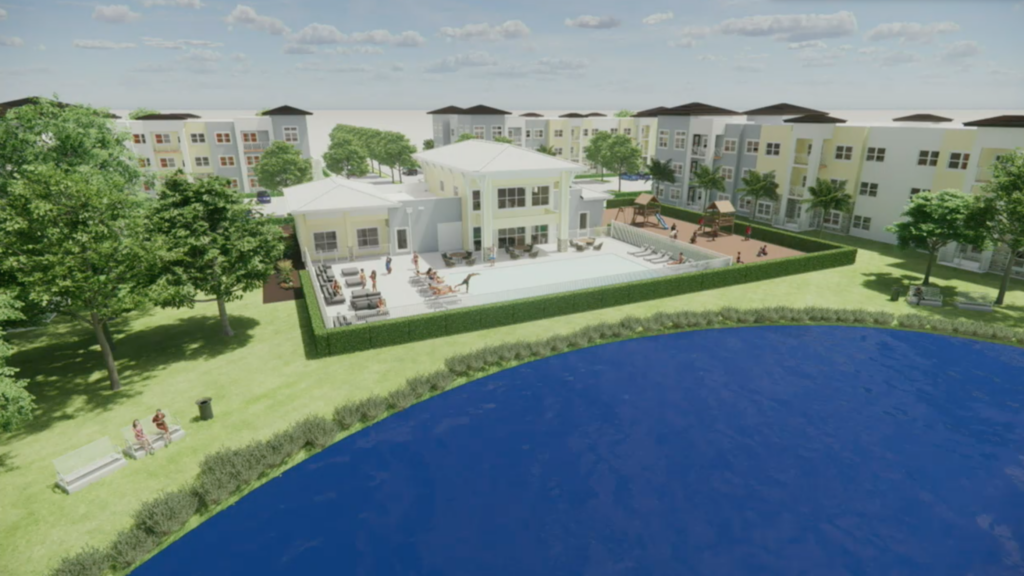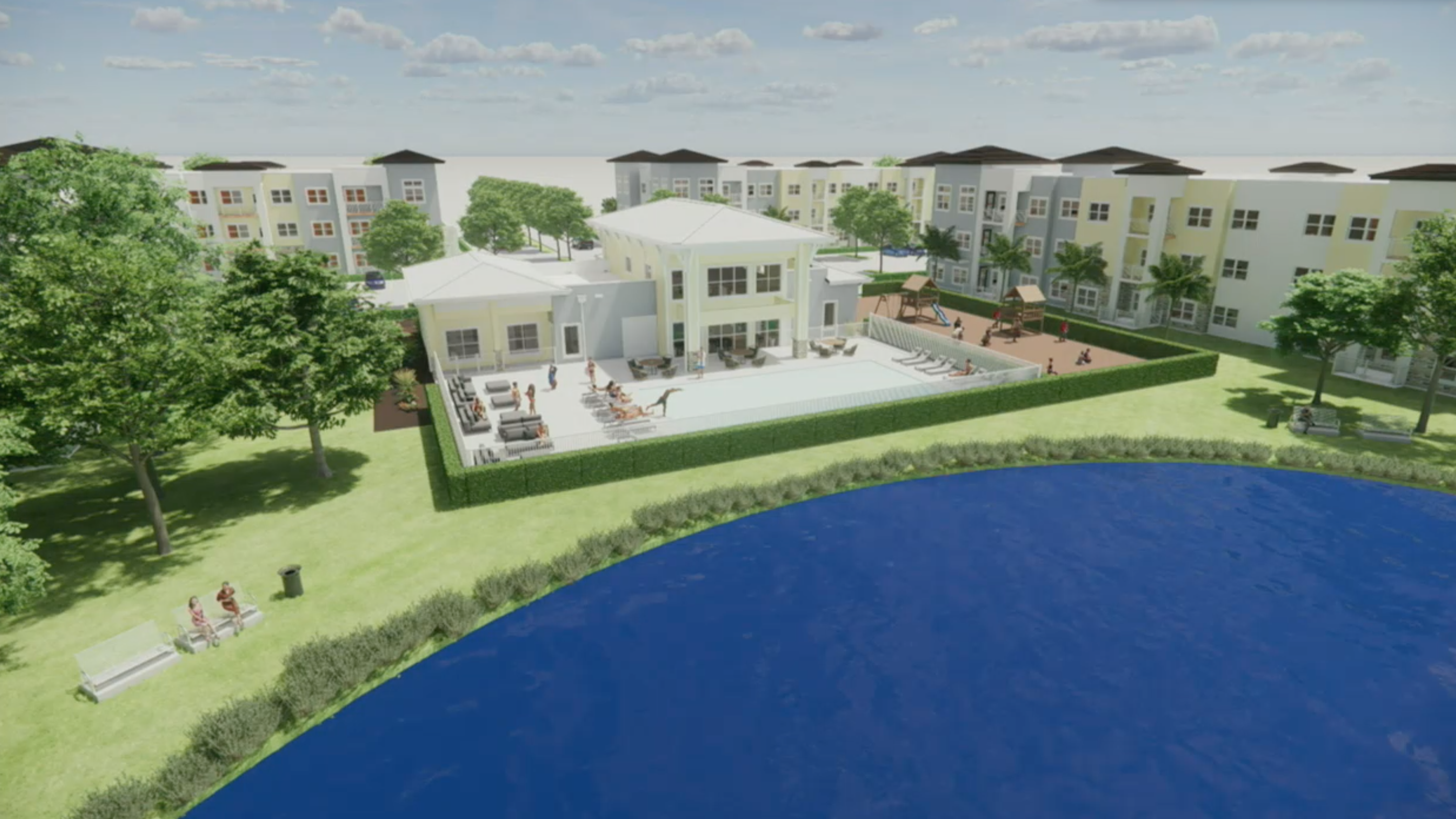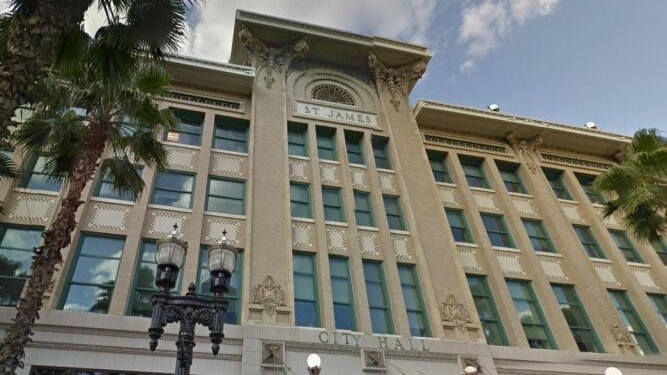
An affordable housing project proposed for St. Johns County has been a source of intense controversy in recent months, but it’s much more than that. It’s a major warning sign that the vaunted quality of life in one of Florida’s wealthiest and healthiest counties is in danger, whether the controversial project is approved or not.
There’s a desperate push-and-pull taking place between the need for housing that working people can afford and the need to keep schools and roads from being overcrowded. To put it another way, it’s a race. Can St. Johns County build the infrastructure fast enough to keep up with the thousands of housing units that have already been approved?
So when a rezoning comes up, all hell breaks loose.
The development at issue, the Preserve at Wards Creek, comes from a national housing developer, Dominium, which proposes building 288 units on 19.22 acres in Northern St. Johns County. The development, near an intersection, is near the huge SilverLeaf development, which has over 16,000 units already approved, though only a fraction have been built.
The county, one of the wealthiest in Florida, has housing that is not affordable for many people who provide police and fire services, those who provide medical care and people who work for the county’s largest employer, the elite school system.
During a Feb. 1 meeting, the members of the Planning and Zoning Agency heard two very different presentations about the proposed development from the developer and nearby residents.
Dominium described why its proposal is ideal: Rents would be capped at 60% of the county’s median household income (about $1,000 per month for a two-bedroom unit and about $1,400 for a four-bedroom). The annual savings in rent of about $3 million per year would most likely be spent in the local economy.
Katessa Archer, with Dominium, also pitched the Preserve at Wards Creek’s amenities, which include a clubhouse, a pool, a fitness center, a meeting room, a playground and a walking trail. But in an interview, she said the major amenity will be its affordability. That means the units will be popular and residents will have incentives to be good neighbors.
“You are getting 30 years of much-needed affordability that doesn’t exist in this side of the county,” Archer said. Today, there is just one affordable multifamily project in Northern St. Johns County — the Oaks at St. Johns near Nease High School, which has a waiting list of about 1,000 people.
At the same meeting, residents delivered passionate opposition. Most of their comments related to issues bigger than the specific project, and written comments often reflected fear. They included:
- “The highly touted county school system is under siege as residential development expands at unprecedented levels.”
- “The traffic alone should be enough to vote against this plan. The amount of time it takes to get through State Road 16 and International Golf Parkway is insane.”
- “When we moved here years ago to be closer to my aging parents in World Golf Village it was a rural area. We were five to eight minutes away. Now there is almost nothing left not being built on.”
- “What was once a pleasant place to live is becoming a nightmare.”
- “The entire area is unprepared for more development. It seems like there has been no planning for this area.”
- “This is not Duval but it could be if the commissioners of St. Johns County allow this growth to happen!”
There were the usual NIMBY comments — not in my backyard — but some of them were offensive, such as claiming households with incomes from $40,000 to $60,000 would produce crime. Actually, as Archer said, St. Johns County already has more than 2,000 households spending more than 30% of their income on housing. In short, potential residents of the new development are already living in the county.

Some comments at the Feb. 1 meeting had the tone of “Let them eat cake.” For instance, a few residents suggested that workers can live in another county, which already is happening. For instance, St. Johns County’s public bus system has routes from East Palatka in Putnam County, where housing costs are lower, to St. Johns, where the jobs are.
Other opponents referred to workforce housing as if it’s low-income housing, like Section 8 rentals, which is not the case for the Preserve at Wards Creek. Residents’ income would be roughly $40,000 to $60,000, meaning most of them would be employed.
A few of the opponents described heartfelt fears that their houses would decline in value. The fact is that in the U.S., houses serve as wealth generators thanks to generous tax deductions.
A review of national studies shows that except in a few rare cases, affordable housing does not cause a drop in nearby housing values and sometimes produces increases. According to the Center for Housing Policy, “Overall, the research suggests that neighbors should have little to fear from the type of attractive and modestly sized developments that constitute the bulk of newly produced affordable housing today.”
For instance, a 1999 survey showed affordable housing had no effect in 19 studies, positive impacts in seven studies, inconclusive impacts in three studies and negative impacts in one study. And what mattered most was the quality of its design, its management and its maintenance. At the Preserve at Wards Creek, Dominium plans to operate the complex and collaborate with major employers in St. Johns County.
A report from the University of North Carolina School of Government showed, “Once affordable housing is actually constructed, negative perceptions of affordable housing decrease.”
And a study by the Urban Institute found that affordable housing reduces homelessness, lifts people out of poverty, improves health outcomes, improves student education and long-term earnings, reduces incarceration and supports employment growth and stability.
When it comes to the Dominium project in St. Johns County, many of the critics said they had no specific complaints about it but opposed any new housing until there are traffic and school additions. That sounds like the M-word — moratorium. Clearly, this affordable housing project is being used as a scapegoat for the previous sins in St. Johns County.
Archer emphasizes the timeline — by the time the Preserve at Wards Creek is built, some traffic improvements will be complete. For instance, the First Coast Expressway under construction may remove some of the congestion near International Golf Parkway. Dominium plans to pay over $5 million for road improvements under the usual fair share-concurrency system. Exactly what improvements will be made depends on talks with the Florida Department of Transportation.
And, the county plans to widen State Road 16 to four lanes in the area, which could also be completed by then.
Still, a petition opposing the affordable housing development has over 2,100 signatures. That’s political dynamite and a big challenge for the developers.
One wonders why Dominium chose a site that had already been turned down for a development that had fewer than half of the housing units. Archer says she spent about two years looking for a site and chose this one because it has the best access to jobs and retail — paired with need.
The project is not necessarily doomed though. The County Commission has approved affordable housing projects once changes are made, especially for traffic. For instance, the commission recently approved a development with 110 units near St. Augustine High School, once traffic improvements — a roundabout and turning lanes — are completed. A previous proposal on that site had been denied, reported the Jacksonville Business Journal.
The commission also approved another development on Sept. 5, and the fact that the developer would be completing the project after traffic improvements were made was decisive. Commissioner Henry Dean said that compatibility, like beauty, is in the eye of the beholder. He favors developments with open space. “I am not going to sit here on this commission and hold any one applicant responsible for all the problems we have in this county regarding transportation,” he said.
Commissioner Christian Whitehurst said funding infrastructure on a pay-as-you-go basis hasn’t worked. “We are in a 50-year trend of rapid growth,” he said. “I don’t think it’s realistic to think we’re going to hit the brakes and it will come to a screeching halt just because we moved here from some other place in the country and like trees in our backyard.”
County residents didn’t help when in 2022 they voted down a 1-cent sales tax for infrastructure — 63% to 37%. Partly as a result, the county has $164 million in needed but unfunded road improvements. So St. Johns County will fall farther behind, as previously approved housing is built and traffic improvements wait. In a high-growth county like St. Johns, delayed infrastructure means more stress for residents.
Also, St. Johns County often uses community development districts to fund infrastructure. Such districts are common in high-growth counties like St. Johns. They can build roads, utilities, parks and other infrastructure and charge their residents for the improvements. That puts the onus for improvements on new residents. When residents receive their annual tax notice, it includes the district fees.
Here is a portion of an annual bill for a Nocatee resident: Ad valorem taxes of $1,600 and community development district fees of $1,200. Then there are the homeowners’ association fees of about $2,400 annually. And for those who belong to condo associations: another $1,000. All those additional fees can make even lower-priced housing unaffordable.
But if what residents said is true — that workforce housing is not compatible with more expensive single-family housing? Then it’s difficult to imagine a change in the status quo. That means housing in St. Johns County will continue to be unaffordable for working people. And the race to maintain the quality of life will be lost.
Mike Clark is the retired Editorial Page Editor of The Florida Times-Union. He and his family lived for about 35 years in Duval County and has lived about 16 years in Nocatee.

Mike Clark devoted about 47 years to Jacksonville's two daily newspapers. He retired in 2020 after 15 years as editorial page editor at The Florida Times-Union, where he and his staff won local, state, regional and national journalism awards.
He is the author of the new book, “Civil War Survivor: Incredible True Story of a Union Private.”





